How To Clean A Microwave? | 5 Easy Ways + Helpful Tips
Even the best small microwaves can rapidly become filthy and odorous from food spills and splatters. The good news is that there are different ways to remove tough stains and grime, freshen up your oven, and ensure that it stays hygienic for future use. This article will cover five easy-to-remember and effective methods of how […]
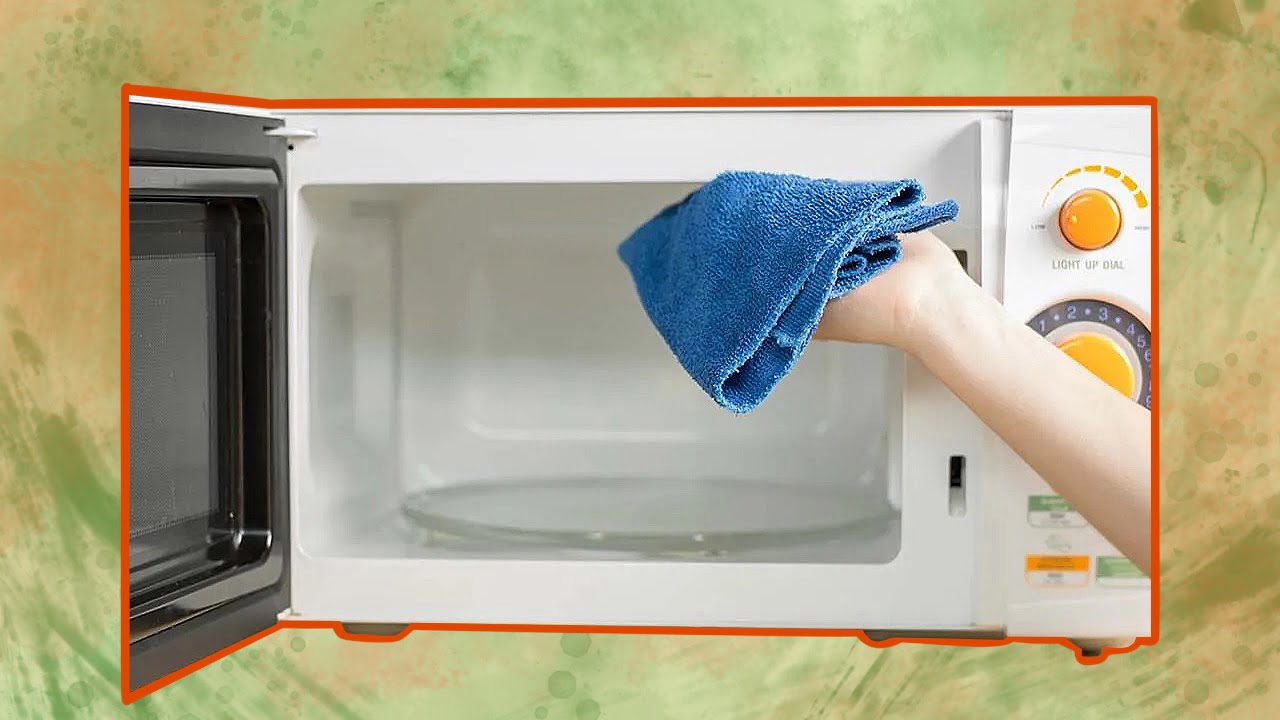
Even the best small microwaves can rapidly become filthy and odorous from food spills and splatters.
The good news is that there are different ways to remove tough stains and grime, freshen up your oven, and ensure that it stays hygienic for future use.
This article will cover five easy-to-remember and effective methods of how to clean a microwave, plus some additional tips!
5 Ways to Clean a Microwave
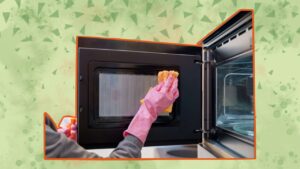
With frequent use, microwaves can quickly become dirty and smelly from food debris, splatters, and general use.
Here is a guide on how to clean a microwave oven using common household items that are easy and effective in removing tough stains and grime.
1. Paper Towels and Water
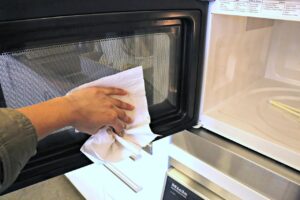
Paper towels and water are safe and environmentally-friendly alternatives to chemical substances.
Dampen a clean cloth with water and place them inside the microwave. Heat the oven on high power for 3-5 minutes until the damp rag is hot and steamy.
Let them sit inside for a few minutes to let the steam loosen any food residue and grime.
Once the towels cool down, use them to clean the microwave’s interior and exterior.
2. Dish Soap and Water
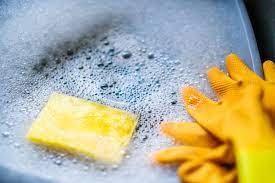
Mix warm water and a few drops of dish soap until it turns into sudsy water.
Place the bowl in the oven on high heat until the water boils and produces steam. Use a few squirts of dish soap and some elbow grease to scrape away any difficult-to-remove stains.
Use a clean damp cloth or sponge to wipe down the surfaces and remove any soap residue.
3. Baking Soda and Water
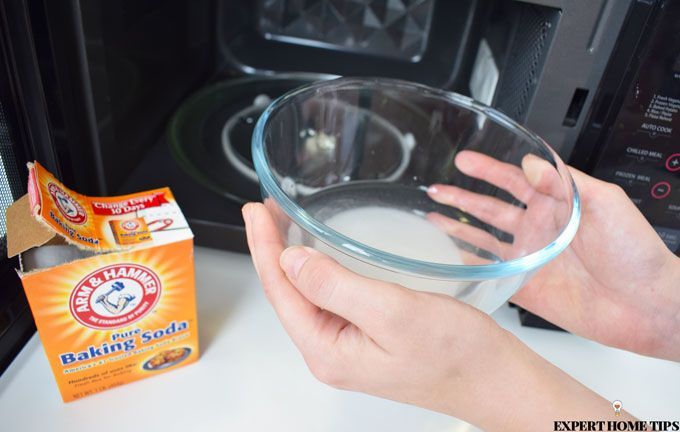
Baking soda is a great cleaning agent because it’s a mild alkali that causes dirt and stubborn grease to dissolve easily in water. This makes it a mildly abrasive natural cleaner and deodorizer.
Mix a tablespoon of baking soda with one cup of hot water in a microwave-safe bowl. Mix the two until it forms a thick cleaning paste, and apply it to the stains on the dirty microwave.
Let the mixture sit for about five minutes, then wipe off the paste residue and remaining grime with a dampened, non-abrasive sponge.
4. Lemon Juice and Water
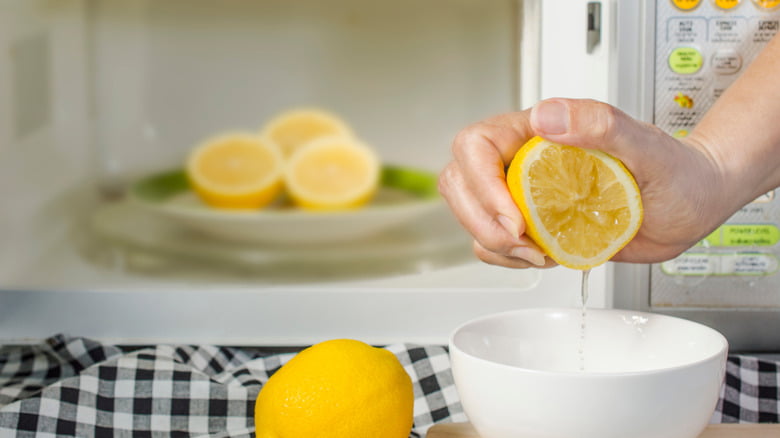
Start by filling a microwave-safe bowl with water and adding a few tablespoons of lemon juice.
Place the bowl in the microwave and heat it on high power for 2-3 minutes until the water produces steam. Let the filter soak for ten more minutes.
Wipe the outside and inside of your microwave with a microfiber cloth dipped in the lemon-water solution.
Cleaning a microwave with lemon leaves it smelling fresh and citrusy.
5. Vinegar and Water
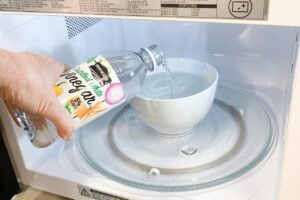
Fill a microwaveable bowl with two cups of water and two tablespoons of white vinegar.
You can also add drops of essential oil to minimize the bad smells from the vinegar.
Put the bowl in your microwave with vinegar and let the water and white vinegar mixture sit for ten minutes.
Then, carefully remove the bowl using oven mitts, and use a sponge or microfiber cloth to clean both the inside and outside of your microwave.
Additional Tips for Cleaning Your Microwave
While home hacks are effective ways to deep clean your microwave, additional tips can make the process easier.
Cover Your Food
Covering your food helps contain any spills or splatters and prevents them from sticking to the microwave interior.
Food splatters can leave behind tough stains that are difficult to clean and create unpleasant odors.
Covering your food can also help it heat up more evenly, resulting in better-tasting food.
Clean Spills Immediately
It’s important to clean up spills and splatters as soon as they occur.
That’s because they quickly accumulate and harden over time, making them more difficult to remove.
This not only creates unpleasant odors but also reduces the oven’s efficiency.
You can use a damp cloth or paper towel to wipe up any spills, making sure to remove all food residue.
Use Microwave-Safe Dishes
Non-microwave-safe dishes can melt, break, or catch fire.
When selecting dishes for use in the microwave, look for those that are labeled as microwave-safe. These dishes are typically made from glass, ceramic, and oven-safe plastic.
Learning how to safely microwave metal and use microwave-safe dishes is essential to protect your microwave and stay clear of any dangers.
Follow Cook Times
Following cooking time is important in preventing overcooking or undercooking your food in the microwave.
In addition to destroying the flavor and consistency of your food, overcooking also risks damaging your microwave and producing unpleasant odors.
Meanwhile, undercooking might lead to foodborne illness or an undesirable taste.
To ensure your food is perfectly cooked, always follow the recommended cook times on the packaging or recipe.
Clean Routinely
A regular cleaning routine for your oven helps detect early signs of a fire hazard, such as when your microwave fan turns on when the door opens.
Set a regular schedule for a deeper clean every few weeks (or depending on the frequency of use) to prevent the buildup of tough stains and grime.
If you routinely clean your microwave, you can ensure it operates efficiently and prolongs its lifespan.
Get the answers to common questions about how to clean a microwave with our helpful FAQs:
Natural cleaning agents are most effective at removing stains, grime, and food residue from the interior or microwave door.
Moreover, they don’t damage the appliance’s control panel or leave harsh chemical residue — even on the microwave turntable and microwave filter.
You can ask a cleaning expert to recommend microwave cleaning products on Amazon — especially if they are highly rated and effective at cleaning your home appliance.
These include steam cleaners, bleach, cleaning sprays, an all-purpose cleaner, and microwave-safe cleaning sponges.
Keeping a microwave clean involves mixing water with non-toxic and eco-friendly cleaning agents — such as white vinegar, baking soda, lemon/orange slices, or dishwashing liquid.
These natural ingredients are effective at removing stubborn stains (like tomato sauce or burnt popcorn), grime, and burnt smell from the interior of your microwave without leaving behind harsh chemical residues or fumes.
Whatever you choose, rinse the interior with the mixture and wipe it with a clean rag to prevent any residue from remaining inside the microwave.
Clean A Microwave FAQs

Conclusion
It’s never been simpler to achieve a clean microwave with these practical tips and tricks!
Whether you prefer natural cleaning methods or specialized cleaning products, these tips and tricks will help you keep your microwave looking and smelling fresh.
